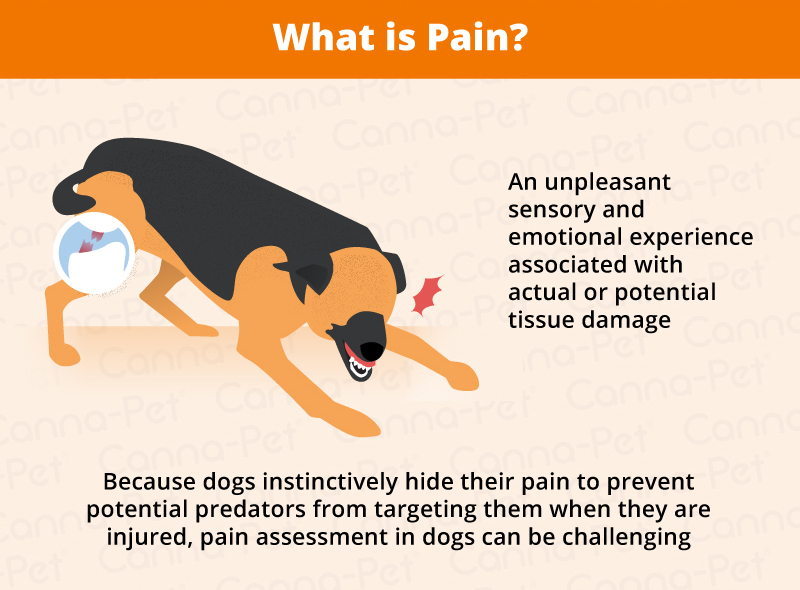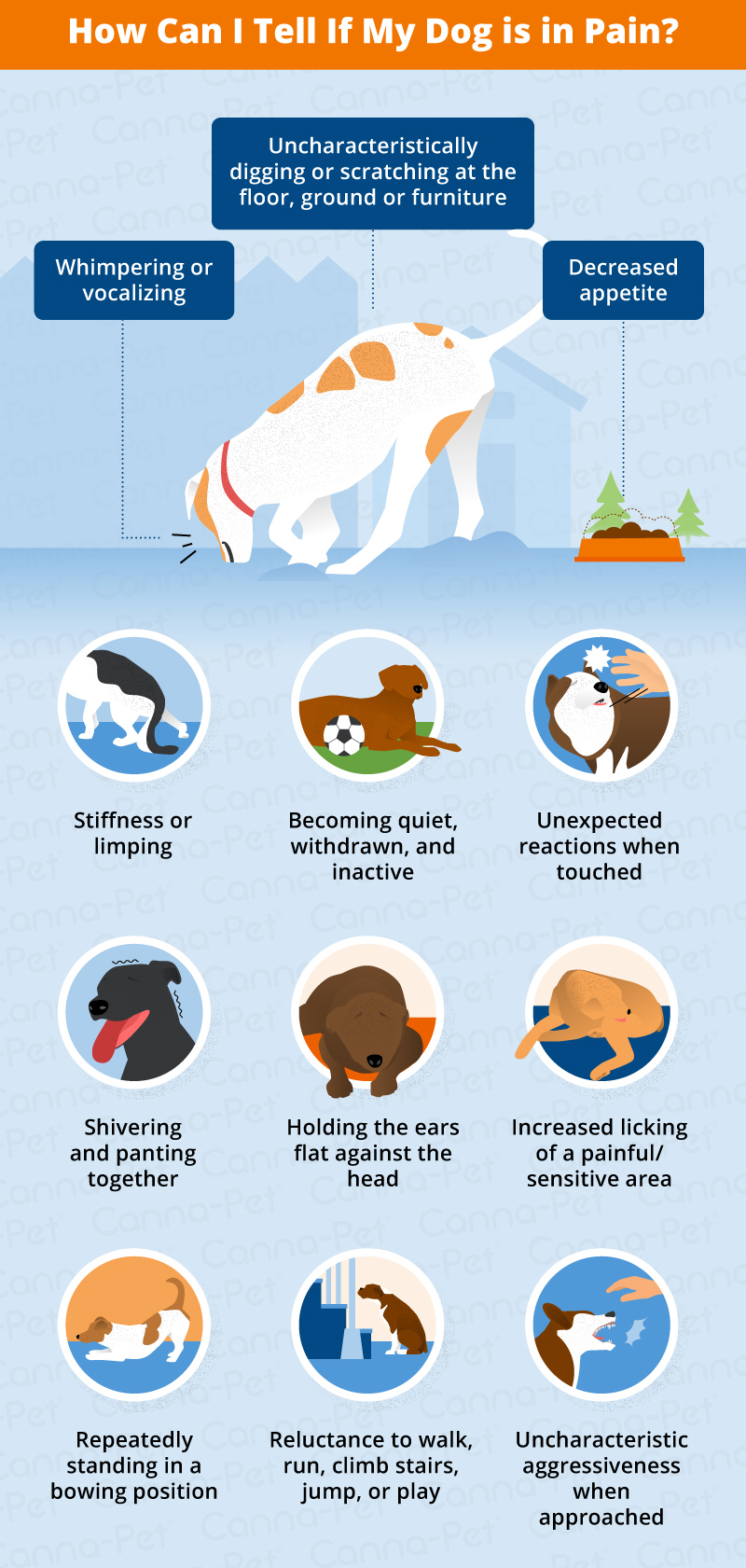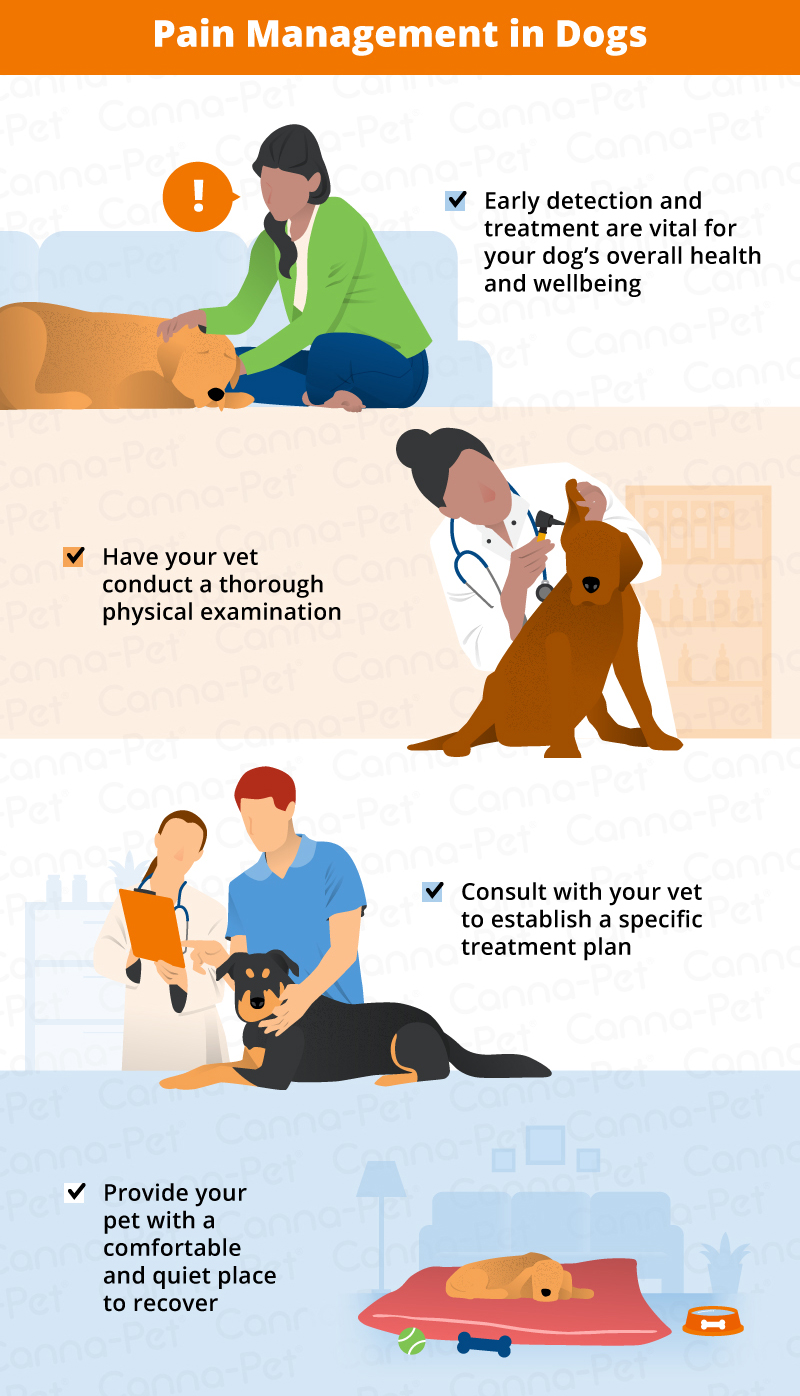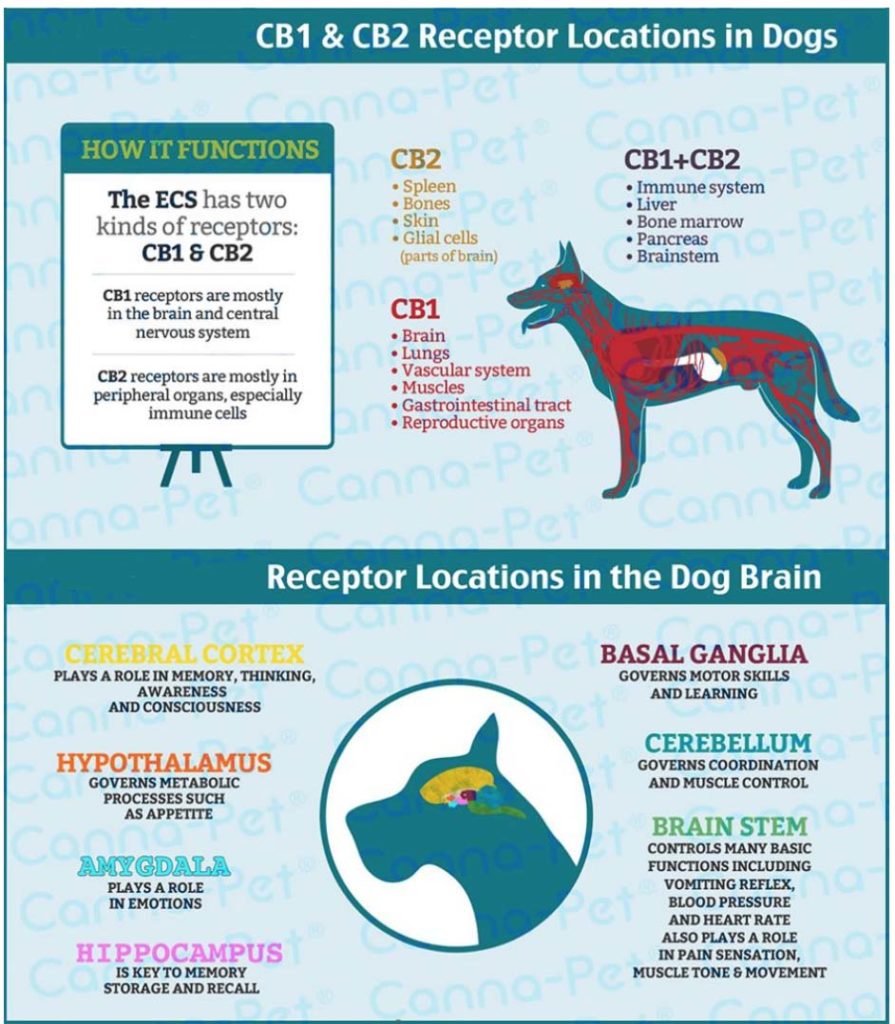In recent years, veterinarians have made great progress in understanding how dogs feel pain and the best ways to manage that pain.
“Many dogs will instinctively hide their pain as a survival mechanism…”

Many dogs will instinctively hide their pain as a survival mechanism, which, in the past, led well-meaning experts to presume that dogs don’t feel pain the same way humans do.
But dogs don’t always tell us they feel pain. Most dogs, especially those of certain breeds, tend to be stoic. That’s because dogs evolved to hide signs of weakness, which could cause them to be attacked by other group members or even predators. Even in a home setting, other household dogs can instinctively jump on a dog screaming in pain, causing further injury. So dogs evolved to hide their pain as a survival mechanism.
We now know that dogs have a nervous system very similar to humans, and they experience pain very much the way we do – they just don’t communicate it as readily.
What is pain?
Pain has as many manifestations as there are injuries, conditions, and individuals. Pain experts define pain as “an unpleasant sensory and emotional experience associated with actual or potential tissue damage.”

“Pain is very subjective and difficult to measure.”
Signs of pain in dogs is very subjective and difficult to measure. Because dogs instinctively hide their pain to prevent potential predators from targeting them when they are injured, pain assessment in dogs can be challenging. The outward demonstrations of pain vary widely from dog to dog. It is important for pet owners to recognize that just because a dog doesn’t cry, limp, or show other obvious signs of pain, that doesn’t mean it isn’t in pain. A good general rule is that if it would hurt you, it would probably hurt a dog.
How can I tell if my dog is in pain?
With obvious injuries or after surgical procedures, we can reasonably assume that a dog will experience pain. Although the signs may be subtle, careful observation of your dog’s body language will often reveal signs of pain in most dogs. Most dogs experiencing pain alter their behavior in some way. In order to tell if your dog is in pain, pay attention to some of these subtle signs. A dog may be reluctant to climb stairs, show decreased activity, or resist being handled or picked up. Subtle signs may be our only clue that the dog is hurting.

Arthritis joint pain is common in older dogs. Anyone who has witnessed an older dog struggle to rise or be unable to stand after lying down can imagine the discomfort these dogs must endure.
Just because they don’t complain, doesn’t mean they’re not in pain. But if you know what to look for, you can see what your dog won’t tell you. Start by knowing your dog’s normal behavior so you can detect abnormal behavior such as:
- Whimpering or vocalizing
- Becoming quiet, withdrawn, and inactive
- Showing uncharacteristic aggressiveness when approached (an attempt to protect themselves from further pain)
- Shivering when not cold
- Panting when not hot or exercised
- Shivering and panting together (these can also indicate nervousness)
- Holding the ears flat against the head
- Increased licking of a painful/sensitive area
- Decreased or loss of appetite
- Reluctance to walk, run, climb stairs, jump, or play
- Uncharacteristically digging or scratching at the floor, ground or furniture
- Stiffness or limping
- Lagging behind on walks
- Repeatedly standing in a bowing position (can indicate abdominal pain)
- Unexpected reactions when touched
- Changes in personality

Some illnesses, while not outwardly obvious, are still very painful. Examples of illnesses that can cause dog pain symptoms are pancreatitis, prostate infection, bladder stones, glaucoma, infected teeth, ruptured anal sacs, arthritis, IBD, neck and back pain, hip dysplasia, patellar luxation, or anything involving the bones.
See our Breed Guide for more specifics on your pet.
Pain Management for Dogs
Not only do we wish to reduce pain for the sake of the dog’s comfort, but also because pain slows healing, interferes with immune function, and reduces appetite, all of which can place the dog in a further debilitated state.
It’s far more effective to prevent pain than it is to reduce it once it’s appeared. That means early detection and treatment are vital to your dog’s general health and wellbeing. In cases of acute pain, get the dog to a quiet place and try to determine the cause. You may be able to detect an injury, but many internal problems won’t be obvious without a veterinary exam. In cases of chronic pain, a trip to the veterinarian is also warranted.

Never give your dog human pain medications unless your veterinarian has directed you to do so. Discuss various options with your veterinarian for treating your dog’s pain. Some other health conditions may limit what sort of medication your dog can take. Some medications, such as non-steroidal anti-inflammatory drugs (NSAIDs), can have side-effects (to which certain breeds seem predisposed), so blood monitoring is often necessary. Sometimes natural alternatives for dog pain relief must be found. If one treatment option doesn’t work, don’t give up. Your dog may respond to a different treatment or to a combination of treatments, and the response may not be immediate.
Don’t be shy about suggesting a change in treatment, or suggesting natural pain relievers for your dog that your veterinarian might not have mentioned. As your dog’s advocate, detecting when your dog is in pain, and then making sure he has access to every option to alleviate that pain is one of your most important responsibilities.
Early treatment and proper care are vital to a dog’s general health and wellness. Make sure you take your dog to the veterinarian early if you detect that he is experiencing pain, or any other type of disease.
Source: VCA Animal Hospitals.
The ECS System and Pain
Josée Guindon and Andrea G. Hohmann, CNS Neurol Disord Drug Targets. 2009 Dec; 8(6): 403–421.
CONCLUSION
ECS modulate pain under physiological conditions… It is clear that the ECS system is regulated following conditions of injury…
Multimodal approaches combining modulation of compounds with other conventional analgesics (e.g. NSAIDs) should also be evaluated for their therapeutic potential. Adjunctive approaches show strong promise for improving the efficacy of existing pharmacotherapies for pain and limiting unwanted side-effect profiles.
Canna-Pet® for Pain – Hemp Nutrition
A recent study by Colorado State University found that among those with an opinion, 95% of Canna-Pet® customers reported that our hemp products provide a moderate amount or a lot of pain relief in dogs.
More information on Hemp and Pain
There are numerous additional cited articles in our Research Page on this topic, including:
Both CB1 and CB2 receptors are implicated in inflammatory pain.






